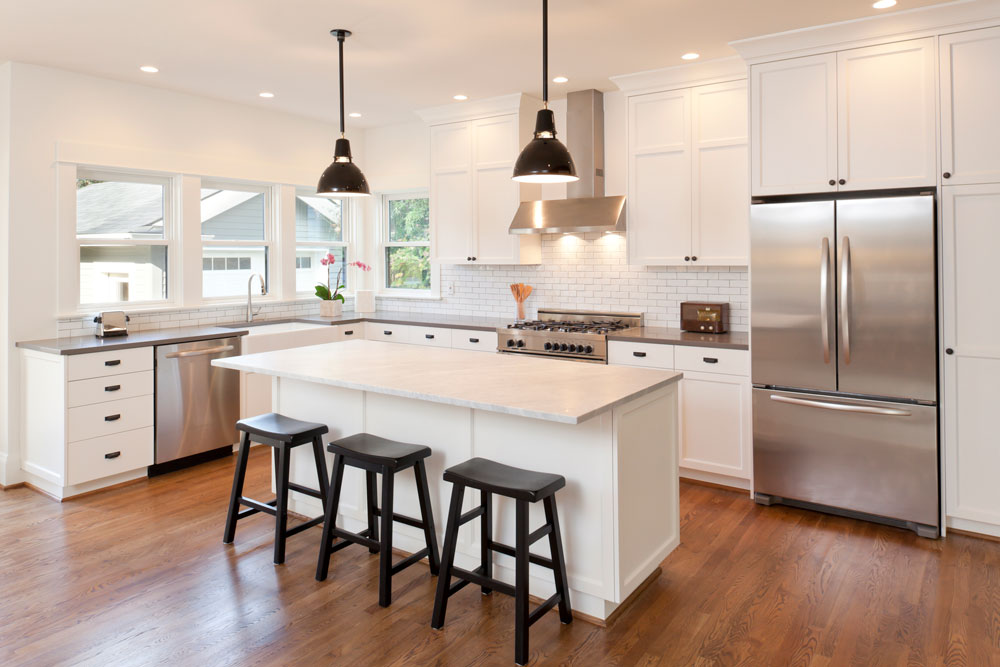The busy kitchen environment can be tough on its surfaces. From the heavy foot traffic as you access different areas during meal preparation to the common spills, splashes, and food stains, to dings and scratches from dropping of sharp, hard utensils and cutlery, there are many different challenges that your kitchen floor has to endure.

The ideal kitchen flooring should be resilient and easy to maintain. Porcelain tile and concrete fit the criteria, but you can also install hardwood floors if you know how to maintain it. Here are a few things to keep in mind when installing hardwood floors in your kitchen:
Manage water risks
The kitchen is considered a moderately moist environment as it is likely to experience multiple water risks with cases cases of kitchen faucet overspray, a knocked over glass of water, or a dropped pot of cooking rice. Fortunately, these spills won’t affect your floor if you mop them up quickly.
However, there are certain water risks in the kitchen, like a leaking refrigerator, water collecting under the sink, or a leak in the dishwasher line. The resulting puddle, if not quickly mopped, can damage your hardwood floor. Although most hardwood floors feature a waterproof sealant barrier that can effectively prevent any water damage, any unresolved leaks or standing water can severely damage the floor and cause you to incur replacement costs.
Choose engineered hardwood flooring
Water is the biggest risk to hardwood planks, especially solid wood. Water damage can cause the wood to warp, split, or rot. If you want to install hardwood flooring in your kitchen, choose engineered hardwood that comes with protective layers.
See Engineered Flooring Products from SLCC Flooring »
Maintain your hardwood floor properly
The key to enjoying hardwood flooring in the kitchen is proper maintenance. This includes wiping spills and puddles immediately, fixing leaks as soon as possible, and maintaining the finish. When your floor begins to wear down, you will need to refinish it by sanding down the surface and re-applying the stain and protective layers.
Start with a properly installed floor
Installing hardwood floors is fairly complex compared to other types of floors. You need to measure and cut the planks precisely and then nail or adhere them to your subfloor properly to eliminate any gaps that may allow water to pass through. For proper installation, it is recommended that you seek the help of a professional.

